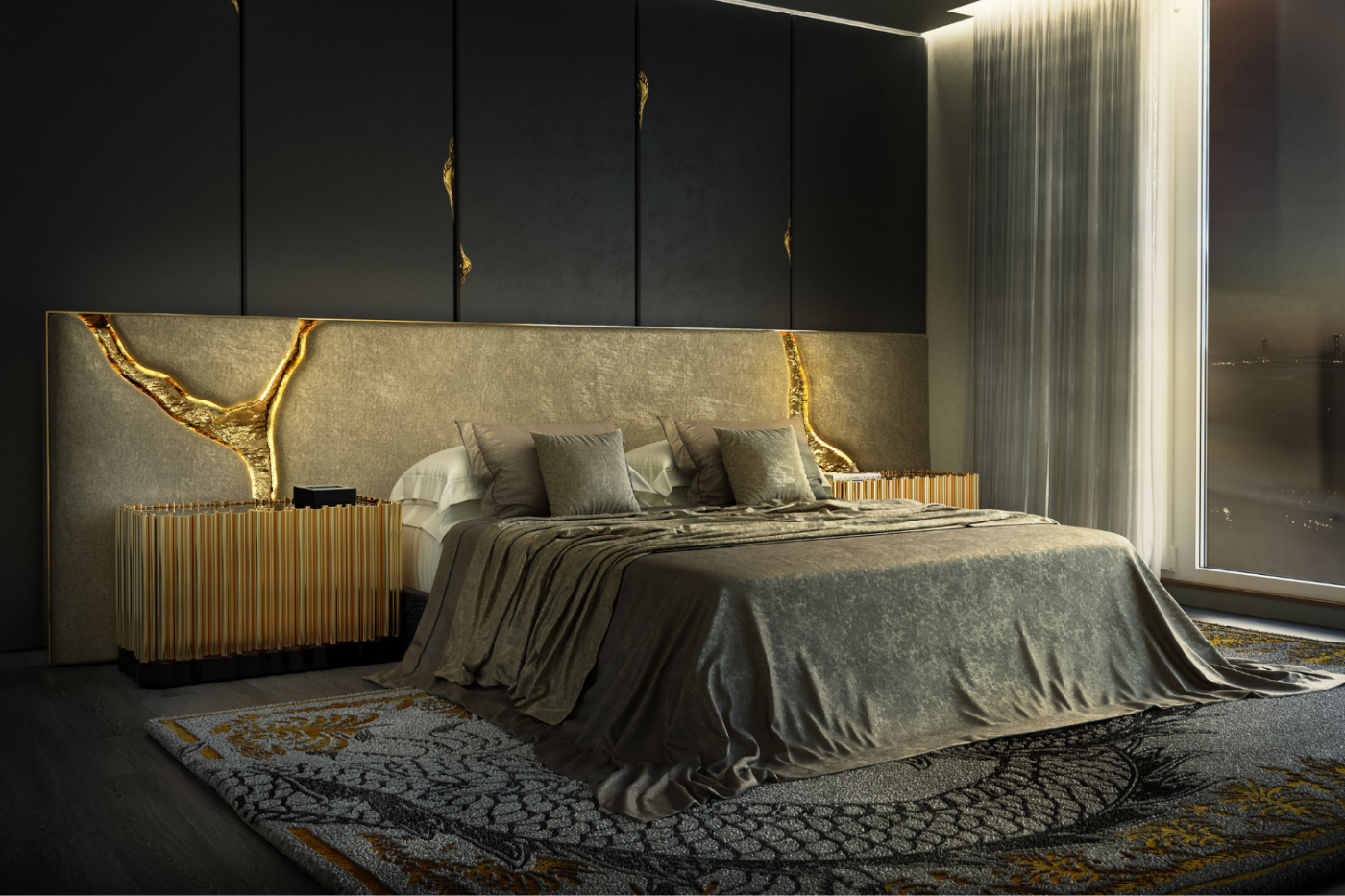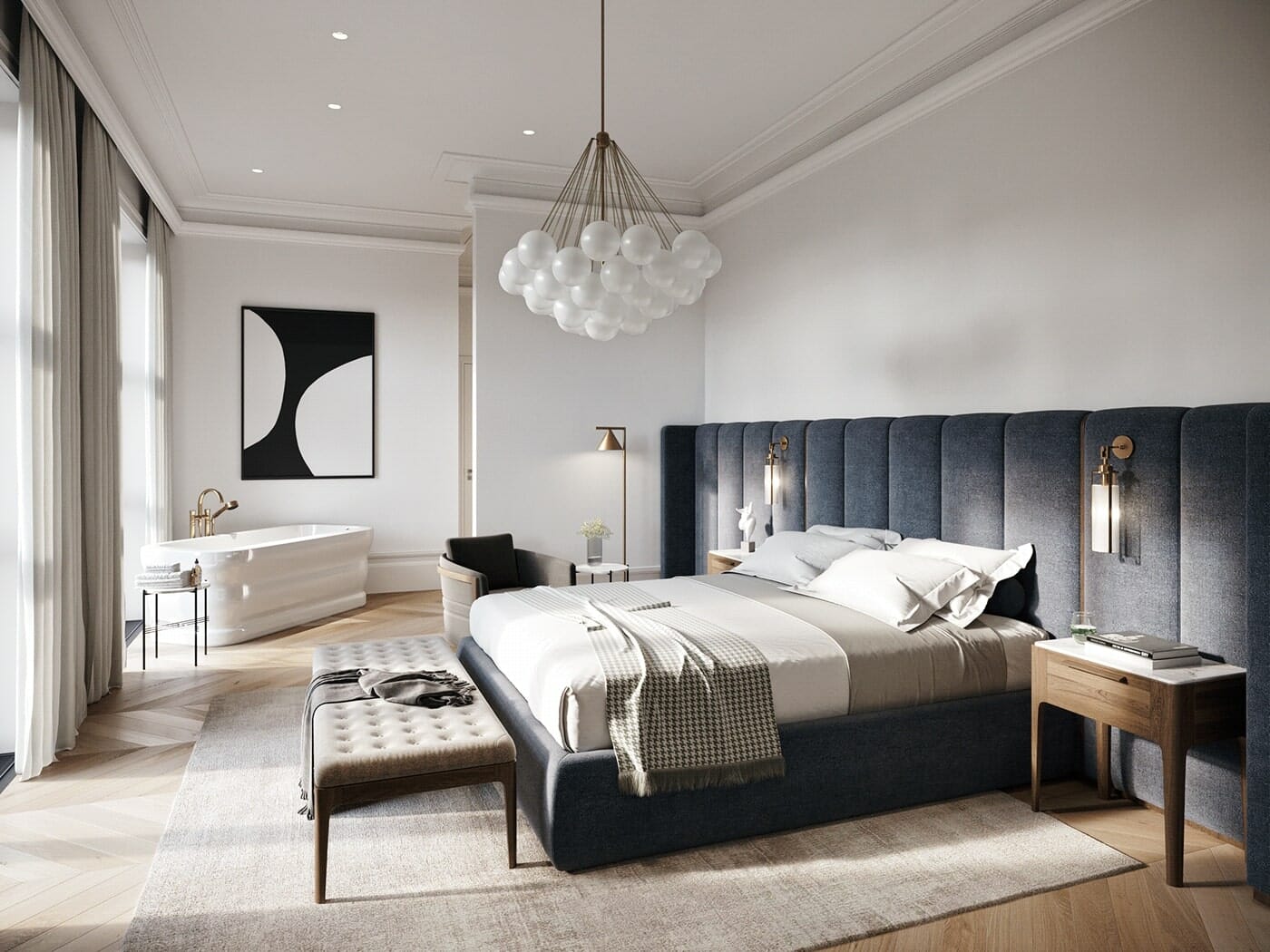Creating a Transitional Bedroom

Transitional interior design, a harmonious blend of traditional and modern elements, offers a timeless and sophisticated aesthetic. This style embraces the classic elegance of traditional design while incorporating the clean lines and contemporary features of modern design. A transitional bedroom, therefore, offers a balanced and inviting space that feels both comfortable and stylish.
Bedroom Layout and Furniture Placement
A well-designed bedroom layout is crucial for creating a functional and visually appealing space. Transitional design emphasizes balance and symmetry, but it also allows for a touch of asymmetry to add visual interest.
Here are some key elements to consider when designing a transitional bedroom layout:
- Focal Point: Choose a focal point for the room, such as a statement headboard, a beautiful armoire, or a large window with a stunning view. This will help to draw the eye and create a sense of balance.
- Bed Placement: The bed should be placed in a position that maximizes the flow of traffic and creates a sense of openness. Consider using a traditional headboard with a modern bed frame or vice versa.
- Nightstands: Nightstands should be placed on either side of the bed, providing convenient storage and a surface for lamps and other decorative items. Choose nightstands that complement the style of the bed and headboard.
- Dresser: A dresser can be placed opposite the bed or in a corner of the room. Consider a dresser with traditional detailing, such as carved legs or intricate hardware, paired with a modern mirror.
- Seating: A comfortable chair or bench can be placed in a corner of the room, providing a place to relax and read. Choose a chair with a traditional design but in a contemporary fabric.
Incorporating Traditional and Modern Pieces
The essence of transitional design lies in the artful combination of traditional and modern elements. This balance creates a harmonious and sophisticated aesthetic that feels both timeless and fresh.
- Furniture: Choose furniture pieces that have classic silhouettes but incorporate modern details. For example, a traditional tufted headboard can be paired with a modern bed frame, or a vintage dresser can be updated with sleek hardware.
- Lighting: Transitional lighting often features a mix of traditional and modern fixtures. Consider using a classic chandelier with modern pendant lights, or a modern floor lamp with a traditional table lamp.
- Accessories: Accessorize with a blend of traditional and modern pieces. For example, a traditional throw blanket can be paired with modern pillows, or a vintage rug can be placed under a contemporary coffee table.
Color Palettes in Transitional Design
Color plays a crucial role in creating a balanced and inviting transitional bedroom. Both classic and contemporary color palettes can be used to achieve this aesthetic.
- Classic Palettes: Neutral colors like white, cream, beige, and gray are timeless and elegant. These colors provide a clean and sophisticated backdrop for traditional and modern elements. Consider adding pops of color with accents in rich jewel tones like emerald green, sapphire blue, or ruby red.
- Contemporary Palettes: Modern color palettes often feature bold and unexpected hues. Consider using a deep navy blue, a rich charcoal gray, or a vibrant mustard yellow. These colors can be used as statement walls or accents to create a modern and sophisticated look.
Key Elements for a Transitional Bedroom: Transitional Interior Design Bedroom

A transitional bedroom effortlessly blends classic and contemporary elements, creating a space that feels both timeless and stylish. It’s about achieving a balanced aesthetic that’s neither too formal nor too casual. To create this look, consider the key elements that define this design style.
Furniture Styles for a Transitional Bedroom
Furniture selection plays a pivotal role in shaping the overall aesthetic of a transitional bedroom. A mix of classic and modern pieces creates a harmonious blend that defines this style.
| Furniture Type | Classic Styles | Modern Styles |
|---|---|---|
| Bed Frames | Upholstered headboards with tufted detailing, wooden frames with carved accents | Sleek metal frames, platform beds with minimal embellishments |
| Nightstands | Traditional designs with intricate carvings, vintage-inspired pieces with distressed finishes | Geometric shapes, minimalist designs with clean lines, use of natural materials like wood or metal |
| Dressers | Antique-style dressers with ornate hardware, traditional chests of drawers with elegant curves | Modern dressers with sleek lines and minimalist hardware, mid-century pieces with tapered legs |
The Role of Lighting in a Transitional Bedroom
Lighting plays a crucial role in setting the mood and enhancing the overall ambiance of a transitional bedroom. It’s essential to strike a balance between ambient and task lighting to create a welcoming and functional space.
“Lighting is the jewellery of architecture.” – Attributed to Frank Lloyd Wright
- Ambient Lighting: This provides general illumination for the room, creating a warm and inviting atmosphere. Options include:
- Chandeliers: Opt for a transitional design with a classic silhouette but modern materials like crystal or metal.
- Pendant Lights: Choose a pendant with a geometric shape or a simple, elegant design to complement the transitional style.
- Floor Lamps: Select lamps with a classic shape and a neutral shade to blend seamlessly with the overall design.
- Task Lighting: This provides focused light for specific activities like reading or applying makeup. Consider these options:
- Table Lamps: Select table lamps with a modern design or a classic shape with a contemporary twist.
- Wall Sconces: Wall sconces can provide both ambient and task lighting, adding a touch of elegance to the space.
- Reading Lights: Attach reading lights to the headboard or use a floor lamp with a directional light source.
Decorative Elements for a Transitional Bedroom, Transitional interior design bedroom
Decorative elements add personality and character to a transitional bedroom, reflecting your unique style while maintaining the overall balance of the design.
- Artwork: Select artwork that complements the transitional style. This could include:
- Abstract paintings with muted tones and geometric patterns
- Black and white photographs with classic framing
- Contemporary prints with a touch of vintage charm
- Textiles: Textiles play a vital role in adding warmth and texture to a transitional bedroom. Choose fabrics that complement the furniture and artwork:
- Natural fabrics like linen, cotton, and wool
- Patterns like stripes, geometric prints, and floral designs
- Neutral colors with pops of color or metallic accents
- Accessories: Accessorizing is key to adding personality and completing the look. Consider these elements:
- Throw pillows: Mix and match textures and patterns to add visual interest.
- Throws and blankets: Add warmth and comfort with soft textures and muted colors.
- Vases and sculptures: Select pieces with a classic or contemporary design to complement the overall style.
